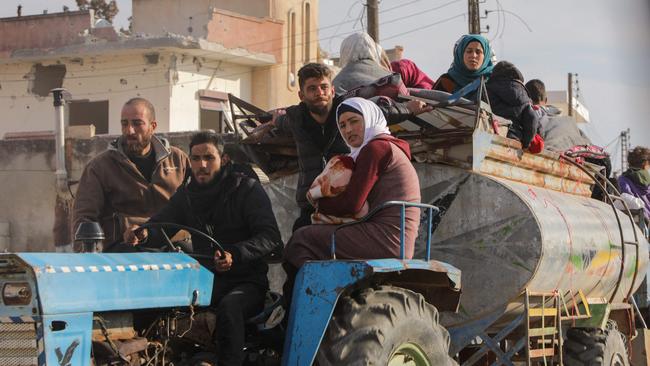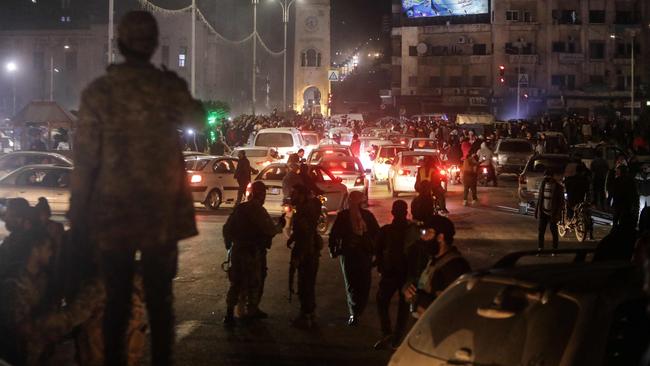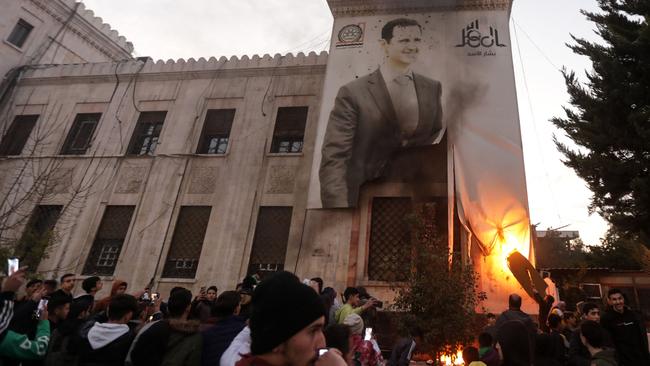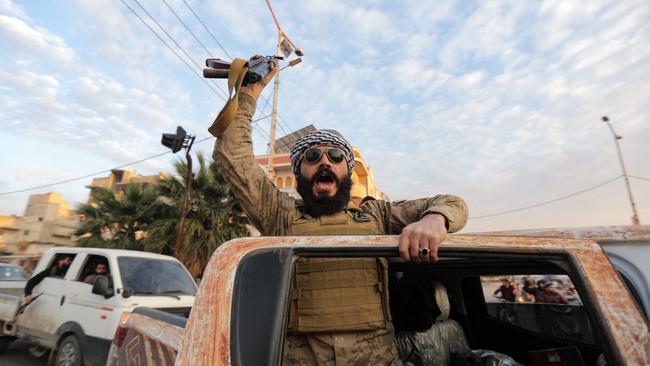Sudden rebel advance in Syria creates ‘real possibility’ of Assad’s fall
Syrian rebels took control of the strategic city of Hama on Thursday, dealing a serious blow to President Bashar al-Assad and his allies Russia and Iran.

Syrian rebels took control of the strategic city of Hama on Thursday, dealing a serious blow to President Bashar al-Assad and his allies Russia and Iran and raising the stakes for an insurgency that now controls a huge swath of territory.
Capturing Hama left only one major city, Homs, in government hands on the road from rebel-held northern Syria to Damascus, the capital. The rebels have vowed to take Homs, potentially cutting off Assad from his ancestral homeland near the country’s coast and jeopardising his hold on power. Homs, a city of about 800,000 people, sits at a strategic juncture between Damascus, the Mediterranean Sea, and the border with neighbouring Lebanon.
There was fierce fighting Thursday in the countryside around Hama between rebels and forces and warplanes loyal to Assad, backed by Russian air power. But the rebels said they had entered Hama, as the Syrian government said it would pull military forces from the city.
“If they continue at this pace toward Homs and capture parts of Homs, we need to just pause and seriously consider the fact that this regime could actually collapse,” said Dareen Khalifa, a senior adviser at the International Crisis Group, a conflict resolution organisation based in Brussels. “At this point it’s a real possibility.”

Seizing Hama would also pose a quandary for rebels whose rapid advance has left their supply lines vulnerable and raised questions about whether they can effectively hold and rule territory, including Aleppo, the country’s second-largest city.
The rebel offensive puts nonstate groups, including the opposition and US-backed militias, in control of vast swaths of territory and threatens Assad’s grip on the country’s main population centres in western Syria.
Russia and Iran were scrambling to help Assad. Russian aircraft launched strikes in opposition-held territory and Iran’s foreign minister flew to Damascus, where he pledged support in the government’s fight against the rebels.
But both Russia and Iran are preoccupied with other battles – Moscow in Ukraine and Tehran with the conflict in Gaza and Lebanon with Israel. Sending military assets to Syria could force both countries to make difficult choices among different theatres of battle. Hezbollah, the Iran-backed Lebanese militant group, which has also fought on Assad’s side against the rebels, has been battered by months of war with Israel.
Assad clawed back control over much of the country since a 2011 uprising devolved into a civil war, but several rebel groups of varying ideological, sectarian and ethnic alignments had retained in control of some areas, particularly in the country’s war-torn north. The war also made Syria an arena for competition among an array of outside powers, including the US, Israel and Turkey.

Syria hosts Russian military bases that are the staging point for the Kremlin’s operations in the Middle East and Africa. For Iran, Syria is an important symbol of its ability to project power abroad and station forces near its arch-foe Israel. The US also has hundreds of soldiers in the country’s east in a campaign against Islamic State extremists.
Israel has conducted hundreds of airstrikes in Syria in its long war against Hezbollah and other Iranian-allied militias, a campaign it has escalated in recent months in an attempt to cut off the militant group’s supply lines. The rebel advance also empowers Turkey, a backer of the opposition that in recent years has been aiming to stabilise the conflict through an agreement with Assad, an offer the Syrian president has refused.
The offensive on Aleppo and Hama has emboldened the rebellion against Assad after years in which the opposition was confined to an area of northwestern Syria up against the Turkish border. Though rebel leaders had vowed to re-enter Aleppo, few expected them to break through the regime lines in last week’s lightning offensive.

Within the area of Syria still under his control, Assad has been wrestling with a brutal economic crisis that has hollowed out his armed forces and made him more dependent on Russia and Iran for energy and other support. US sanctions and corruption have further weakened his rump state.
Assad’s fall would be hailed by millions of Syrians as a victory for the nearly 14-year-old rebellion against him that began with protests demanding freedom of speech and democracy. It would also spark anxieties among many of the government’s supporters, including members of the Alawite Muslim minority and others, as to how the Islamist insurgents would govern after years in which the war has deepened sectarian tensions.
The swift collapse of regime forces in Hama illustrates how the rebels are building on momentum after capturing Aleppo late last week, with government forces also crumbling within days of a rebel offensive there.
Hama also has emotional significance for opponents of the Assad regime, in part because of an Islamist-led uprising that took place there in 1982 that was crushed by the government in a crackdown that killed thousands of people.
After moving into Hama, the rebels issued a notice calling on police in the city to remain at their stations, saying that the opposition government would soon take control.
Military analysts said government forces are facing a new challenge in dealing with military hardware captured by the rebels from the government. Opposition forces said they had overrun a series of government military bases in recent days.

“The regime seems incapable of dealing with the tanks now,” said Gregory Waters, an analyst on Syrian military dynamics with Syrian Archive, a research organisation.
In the days since capturing Aleppo, the Sunni Islamist-led rebels have appealed to government soldiers to defect and have acted to reassure members of other religious sects. The largest rebel group, Hayat Tahrir al-Sham, is labelled a terrorist group by the US, although it claims to have given up its extremist roots.
How the rebels govern Aleppo and other cities is another test for the opposition. HTS leader Abu Mohammed al-Jawlani on Wednesday told International Crisis Group that the militant group is considering dissolving itself “to enable full consolidation of civilian and military structures in new institutions reflecting the breadth of Syrian society.”
The challenge for Assad now is to reorganise and attempt to defend the territory he still holds after a week in which his security forces collapsed in stunning fashion, relinquishing the city of Aleppo, which they reclaimed in 2016 after fighting for years with the backing of Russian air power to reclaim it.
Russia and the Syrian regime have intensified airstrikes in rebel-held territory since the offensive began. On Wednesday night a government airstrike killed a civilian and wounded a woman and two children in the opposition-held city of Idlib, according to the White Helmets, an independent rescue organisation.
The Wall Street Journal



To join the conversation, please log in. Don't have an account? Register
Join the conversation, you are commenting as Logout